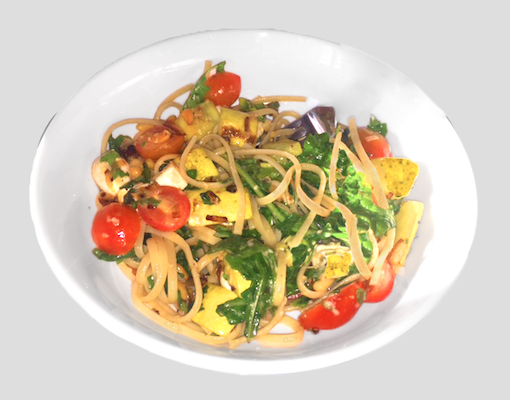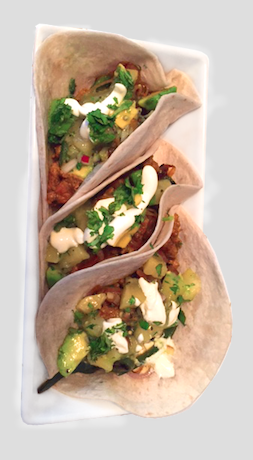Putting Meal Delivery Services to the Test
Does not having to shop for and cook your dinner really save time and money?

When you get home from a busy day at the hospital, probably the last thing you want to think about is what to make for dinner. Or maybe you rummage through your pantry and refrigerator, only to find that you don’t have what you need to prepare the meal you want. Fast foods such as burgers, burritos and pizza might be convenient in a pinch but are typically high in salt, fat and preservatives.
Meal delivery services are making those dinnertime dilemmas a thing of the past, but do they really save time and money? We tested four nationwide services and talked with veterinarians who have tried some of them. Here’s what you need to know.
Types of Meals
Whether you want meals with organic ingredients or paleo, vegetarian, gluten-free or kid-friendly options, there’s a delivery service that’s right for you. Most offer two-person and family plans, with two or three — or more — meals delivered weekly. Typically, all you need in your kitchen are oil, salt and pepper, plus basic cookware.
RELATED:
- Breakfast: What to Eat, What to Avoid
- Stress, Overeating and the Gut
Blue Apron
Blue Apron has the fewest meal options at six per week. The company makes an effort to use natural and sustainable proteins. Examples of meals include salmon and udon noodle stir-fry, smoked trout and asparagus salad, and skillet vegetable chili with cornmeal and cheddar biscuits.
Home Chef
Home Chef offers a choice of 10 different meals each week, including breakfast options and one premium meal, such as lamb chops with basmati rice, creamy feta sauce and cucumber salad. One week’s menu included steak burritos, chicken Milanesa, grilled pork chops, and French onion risotto with Swiss cheese. Recipe cards are easy to follow and can be saved in a binder that comes with the first order. Meals are easily scheduled or canceled.
Sun Basket
Sun Basket is a good meal delivery choice for families who prefer organic ingredients or more exotic or ethnic options. Among the dozen options for one week: yakitori chicken meatballs with roasted cauliflower and carrots, curried tofu and summer squash with carrot ribbons, steak with paprika butter and pan-charred vegetables, and two breakfasts — peach smoothie bowls and whole-grain pancakes with strawberries. The website is easy to navigate — unless you’re trying to skip a week.
Hello Fresh
Hello Fresh has eight weekly options, such as Monterey Jack burgers; crispy Cajun catfish; orecchiette with sausage, broccoli and pesto; spiced chicken thighs with basmati rice and sugar snap peas; and one breakfast choice. Subscribers can choose among egg-free, nut-free, gluten-free and spicy dishes. Premium meals are also available.
Pros and Cons

The main advantage of these deliveries is the savings in time spent planning and shopping for meals. The kits also encourage cooks caught in a rut to try new things and use ingredients they don’t normally have in the pantry. Other benefits include portion control and calorie-counted meals. For busy veterinarians, however, they don’t necessarily save time in the kitchen.
Kathryn Primm, DVM, owner of Applebrook Animal Hospital in Ooltewah, Tennessee, says meal planning and shopping aren’t difficult — she takes care of those tasks on weekends. For her, the chopping, prepping and cooking time required by meal kits were a strike against them. Some can be prepared in just 15 or 20 minutes, but most require 30 minutes or even up to an hour. “What I need is something to save time on workdays,” she said.
Jessica Wilcock, DVM, who practices at Evergreen Veterinary Hospital in Kirkland, Washington, had the opposite experience. The meals didn’t get her out of the kitchen faster, but they did reduce planning and trips to the grocery store.
They can cut costs, too. “I think we’ve saved money by eating out and getting takeout less,” Dr. Wilcock said. “Also, I waste less money on getting, for instance, an entire bottle of capers when I only need a table-spoon. So there are some grocery savings also.”
Recipe cards are generally easy to follow, with prep and cook times listed. Home Chef recipes note the difficulty and spice level of each meal. The amount of chopping and number of steps required vary by recipe, and may take longer for inexperienced cooks. Meal preparation goes fastest if two people work together.
The meals also generate packaging waste, although companies use recyclable materials. Home Chef’s plastic containers with screw caps can be reused. Blue Apron has the least amount of packaging, but that’s because everything arrives jumbled together in a box and must be sorted. It’s easy to put the wrong items together.
Dr. Wilcock recommends meal kits regularly to coworkers and clients, but noted that it’s important to research the types of recipes each company provides, cost per week and number of people served before making a choice. “It may take trying a few services to find the one that fits you best,” she said.
Kim Campbell Thornton has been writing about dogs and cats for 32 years. She is the award-winning author of more than two dozen books and hundreds of articles on pet care, health and behavior.
